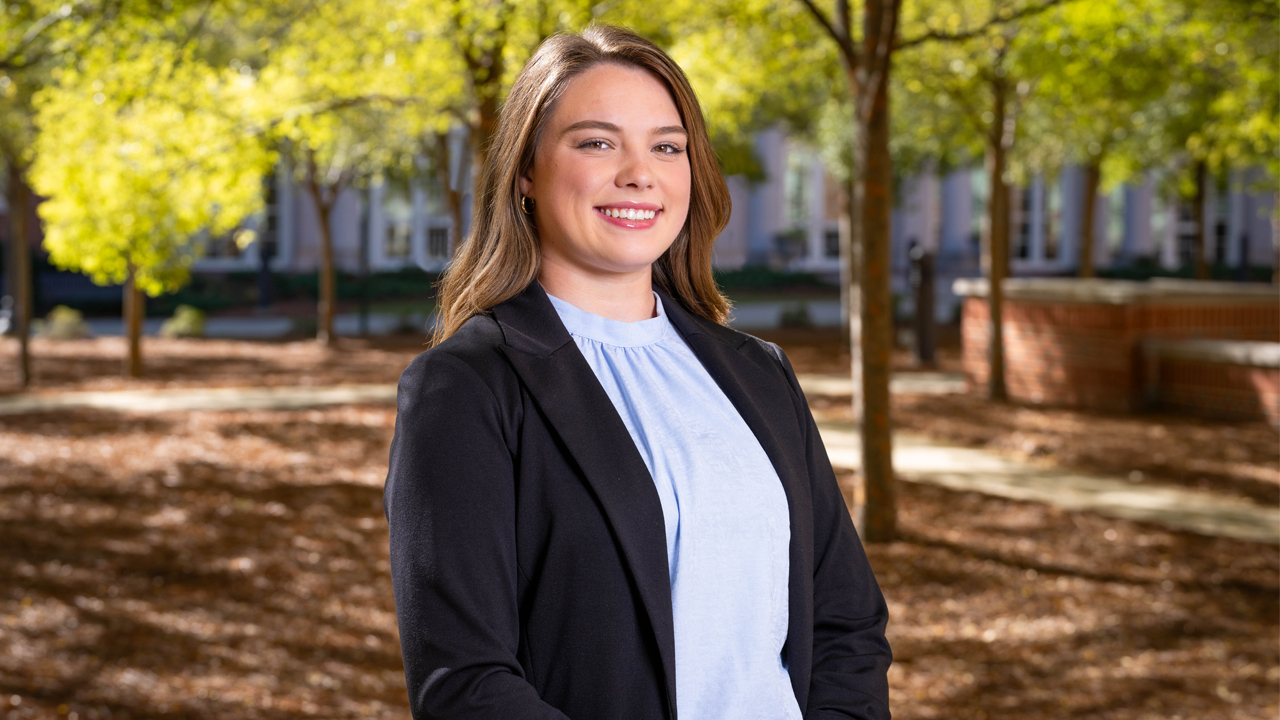Biosystems engineering student researches impact of microplastics and microfibers on aquatic and human life
Published: Nov 11, 2024 11:15 PM
By Olivia Ballard
Have you ever wondered how plastics and fibers in lakes could end up on your dinner plate?
Alison Boardwine, a senior in biosystems engineering and public and one health, recently began her second round of research on the effects of microplastics and microfibers on Daphnia magna, a water flea and one of the primary consumers in aquatic food webs and their connection to potential human impact.
Boardwine combines environmental sustainability and public health to show how these contaminants affect not only aquatic species but also humans through bioaccumulation and biomagnification — the buildup and increase of pollutants. The study focused on the acute toxicity, accumulation, depuration and potential risks of environmentally representative microplastics on Daphnia magna.
Daphnia magna is abundant in freshwater habitats like ponds and lakes and is the study’s focus due to its affluence and sensitivity to pollutants, according to Boardwine. Testing of two types of microplastics and six microfibers against the flea revealed that while neither environmental nor hazardous concentrations affected the species’ survival — nylon microfibers did.
“Nylon is the only fiber type shown to affect the survivorship of Daphnia magna,” Boardwine said. “We plan to look into the possible causes of this, including analyzing the chemical additives of these fibers.”
With two previously published studies on microplastics and metals in the upper Great Lakes, Boardwine has carried her knowledge into her current work. While each project is different, they all have a central theme of researching the effects of human-made materials in aquatic environments.
“I have gained experience analyzing data, developing scientific writing skills and working with scientific instruments while working in the lab,” she said. “I believe it is important to understand the impacts of human contributions to pollutants to become more efficient as engineers at assessing and limiting the environmental impact of processes.”
Boardwine works with Tham Hoang, associate professor in the school of fisheries, aquaculture and aquatic sciences, in the Ecotoxicology and Risk Assessment Laboratory. She credits Auburn for her expertise and proficiency in and outside the lab and her desire to continue working in the environmental health field after graduation.
“Auburn has provided me with a supportive environment to pursue my interests in environmental sustainability and public health,” she said. “From my experience working in ecotoxicology research, I want to contribute to understanding pollutant dynamics and potential risks in ecosystems to develop strategies to mitigate these pollutants in my career.”
Media Contact: , orb0015@auburn.edu,
Alison Boardwine, a senior in biosystems engineering and public and one health, poses for a photo outside of Shelby Center on Auburn’s campus.

